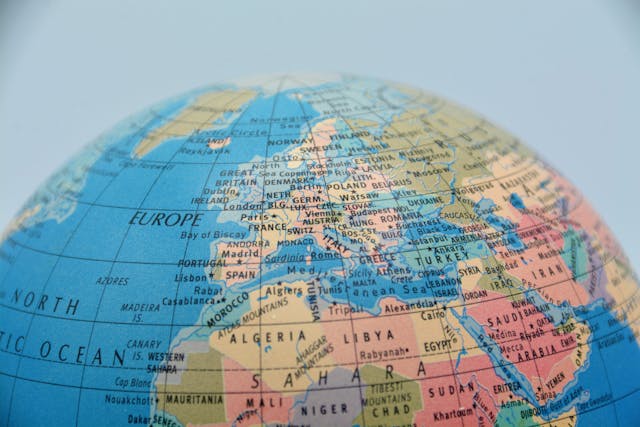
Why do so many borders in Africa have straight lines? So many countries in Africa have borders with straight lines because there are no landmarks to define the borders in those areas. Along with that, nearly all of the borders were created by the colonial powers.
If you look at the borders between countries in Europe, they tend to be uneven, sometimes jagged lines. They follow rivers, go around landmarks, and sometimes move for no apparent reason. This is because these borders have evolved over many centuries. They have changed due to wars and treaties until they have settled in the place they are today. These days it is less likely for countries to try to take part of another country, although, it obviously does still happen. So, why aren’t borders in Africa like this?
Well, the first thing we need to understand is that there are other continents with countries that have straight borders and there are countries within Africa that don’t have straight borders. The border between Canada and the USA, for example, is a very straight border. The border generally follows the 49th parallel, making it the longest border and the longest straight border in the world. The border between the United States and Mexico has a border that is half made up of zigzag lines and half made up of perfectly straight lines. Australian states have extremely straight borders as well. I realize these states are not countries, but the same principle applies. We can also very clearly see, by looking at a map of Africa, that a lot of the countries don’t have straight borders. What we generally find, both in Africa and in other countries, is that where there are landmarks, like rivers and mountains, the borders tend to follow them. And where there are no landmarks, such as along large tracts of Canada, and across the Sahara Desert, people have made straight borders.
However, where the borders are and the countries that they have created are largely down to the colonial powers of Britain, France, Germany, and the Netherlands. They decided the majority of the borders at a conference held in Berlin in 1884-85. 14 countries attended this conference, including the USA, which didn’t have any colonies in Africa. The goal of the conference was to regulate colonization and trade. The conferences wanted to set the borders of the individual colonies, but a lot of the borders had already been decided by treaties between colonial powers long before the conference. The Berlin Conference may not have finalized all of the borders, but it did legitimize colonization. Each colonial country had pretty much the same goals. They wanted to make sure that they kept as much territory as possible, as many resources as possible, and as much control as possible. Where there were landmarks, they used those to make borders and where there were none, such as across the Sahara Desert, they just drew a straight line. The Berline conference and this approach to setting the borders where they wanted them had several consequences that may or may not have been intentional.
The first consequence was that it encouraged increased colonization. At the time of the Berlin conference, only about 20% of Africa had been colonized. The Berlin conference gave the colonial powers the idea that they needed to grab as much land as they could as quickly as they could in order not to lose out. This started the “scramble for Africa”, which didn’t end until World War 1, by which time 90% of Africa was colonized.
Another consequence, and one that had ramifications that still exist today, was that these borders divided up ethnic groups of people. People had their movement restricted and nomadic people were forced to stay in one place. The borders changed the way people lived and changed African culture. These borders split up one ethnic group of people and put them together with another group of people. It would be like dividing up countries in Europe and saying that half of the people in France and half of the people in Germany were now one country. This was probably intentional because the best way to control a people is to divide and conquer. Any colonial power would find it easier to subjugate the people if they were not unified in opposition. The powers encouraged division between the people they governed, and this division has continued to this day in many African countries. And this is what I learned today.
Sources
https://www.zmescience.com/science/news-science/africa-straight-borders
https://www.aljazeera.com/news/2025/2/23/ever-wonder-why-africas-borders-appear-so-strange
https://en.wikipedia.org/wiki/Berlin_Conference
https://en.wikipedia.org/wiki/Scramble_for_Africa
https://aithor.com/essay-examples/the-impact-of-colonial-borders-on-modern-africa
Photo by Christian Reinke: https://www.pexels.com/photo/close-up-shot-of-a-globe-14654190/
